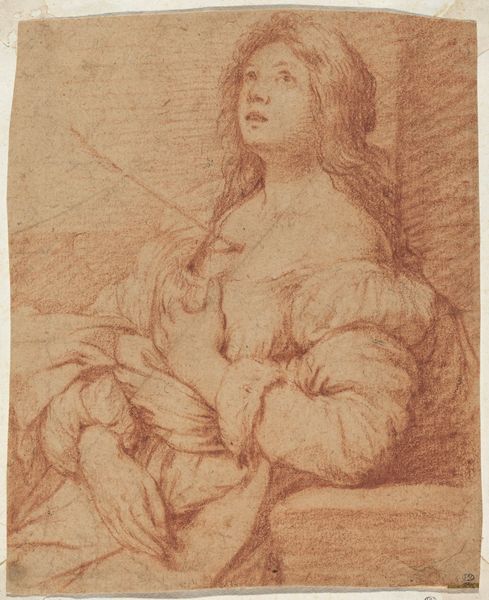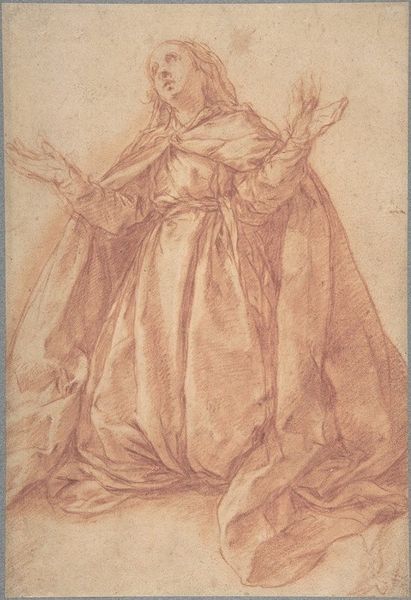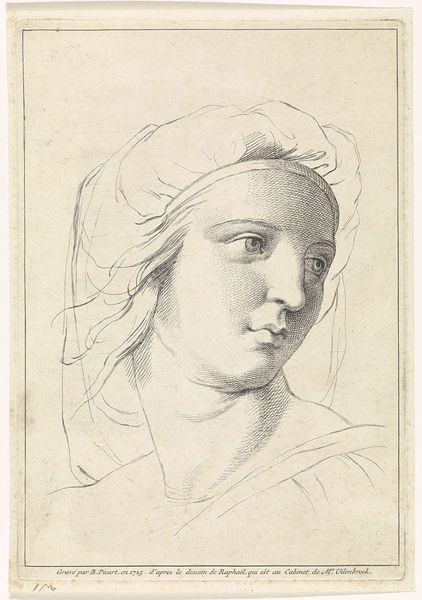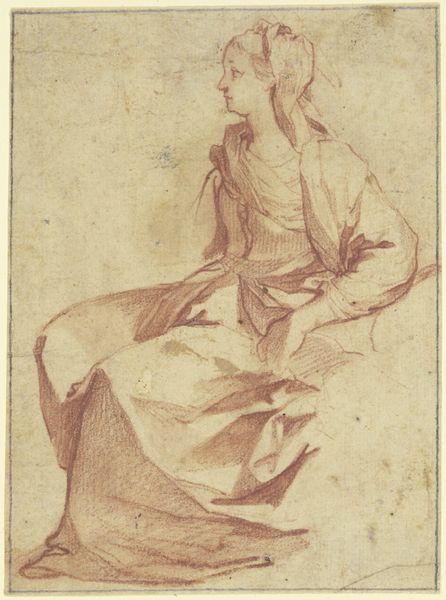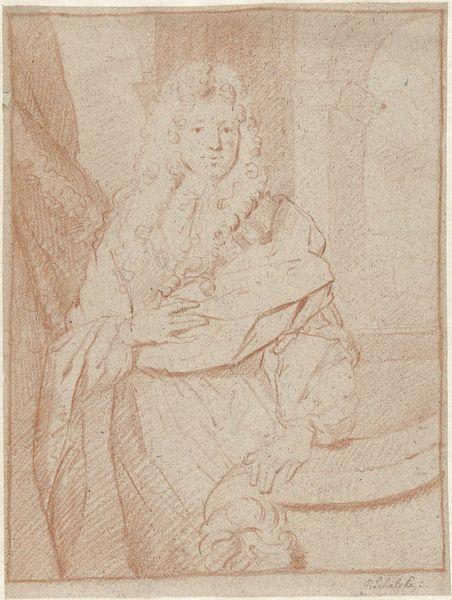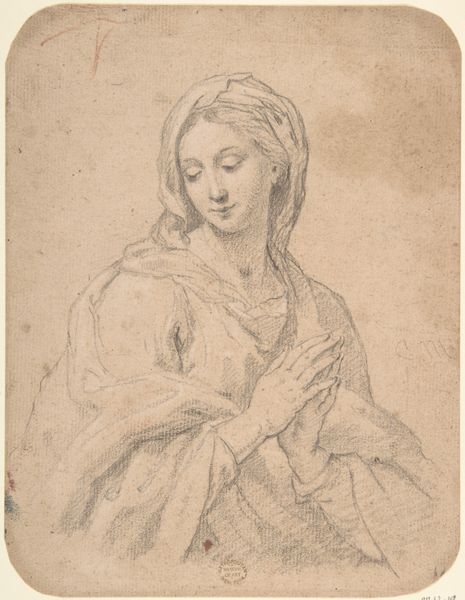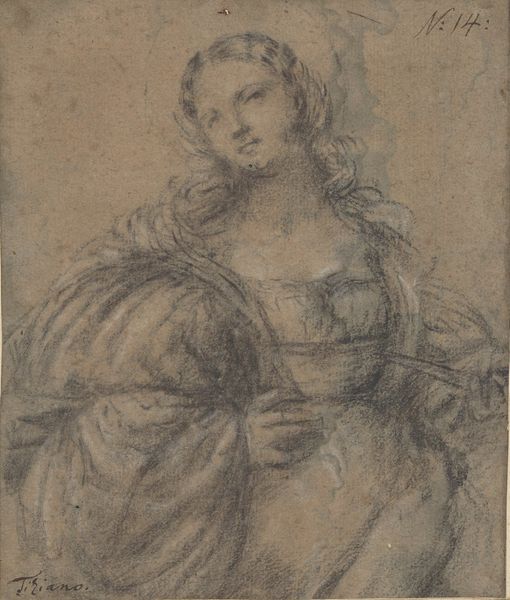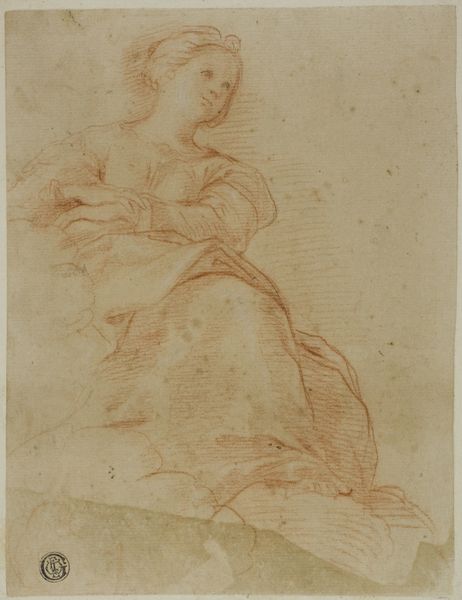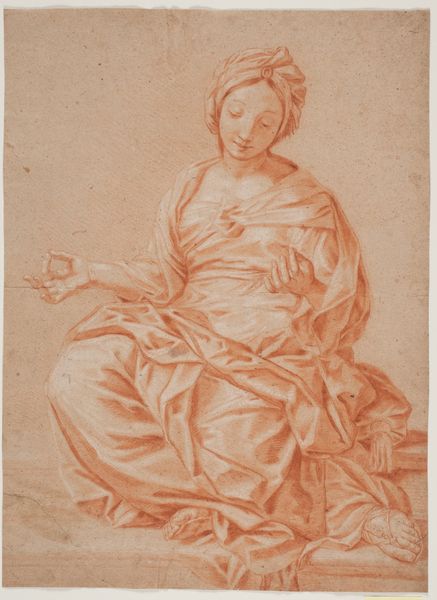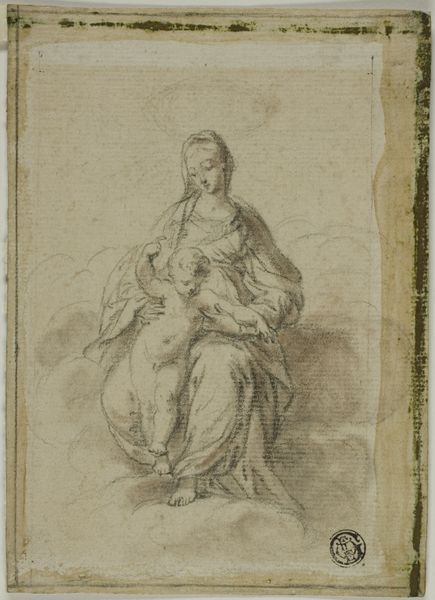
Studie voor een koninklijke bruid, die haar linkerhand uitstrekt (Catharina van Siena?) 1615 - 1656
0:00
0:00
drawing, pencil
#
portrait
#
drawing
#
amateur sketch
#
toned paper
#
light pencil work
#
baroque
#
pencil sketch
#
charcoal drawing
#
figuration
#
pencil drawing
#
ink drawing experimentation
#
underpainting
#
pencil
#
portrait drawing
#
pencil work
Dimensions: height 265 mm, width 238 mm
Copyright: Rijks Museum: Open Domain
Editor: Here we have Giovanni Giacomo Barbella's "Study for a Royal Bride, Reaching Out Her Left Hand (Catherine of Siena?), made between 1615 and 1656, executed in pencil. It's interesting to observe the process captured within what appears to be a sketch; the way he renders form with light pencil work makes it almost seem ephemeral. How do you read this piece? Curator: I read it as a fascinating artifact of artistic labor. The red chalk and toned paper – common materials – speak volumes. Barbella wasn’t aiming for illusionism here, but to work through problems of form and gesture. He’s laying bare the production, the how of creating an image. It prompts us to question the very idea of “high art” when we see the raw process. Do you consider this work challenging social barriers by experimenting with accessible medium? Editor: I hadn't considered the implications of the medium itself, I was focusing more on the narrative. I can see your point now. It appears quite unfinished. The status of 'drawing' then indicates it might have been for a specific purpose, something not destined for the salon, something quite functional in the broader studio context, right? Curator: Precisely! And that's the materialist perspective. We consider what these drawings *did* within the art world, not just what they *represent*. Was it a demonstration piece? Practice? A study of particular features for future larger work? A contribution of knowledge to other workshop colleagues? All of these social factors were at play in its production and are deeply intertwined with its materiality. What did Barbella intend for this piece, and who was his intended audience? Editor: It really transforms the drawing once you look at it from that production standpoint, considering materials, process, and use instead of purely symbolic value. Curator: It’s about decentering the idea of individual genius. Seeing how artistic creation is embedded in social practices, material conditions, and often hidden labor!
Comments
No comments
Be the first to comment and join the conversation on the ultimate creative platform.
